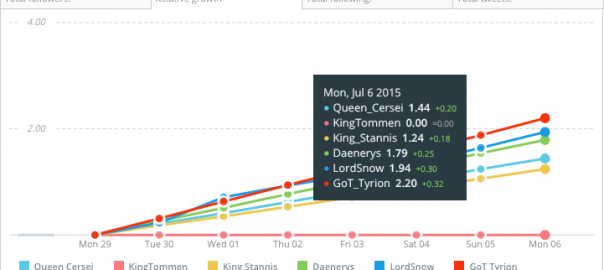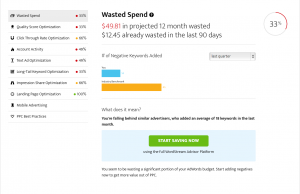So you manage social media for a (personal) brand and everyone who’s on the outside is thinking “Big deal, you tweet once or twice, you spend your day on Facebook AND you get paid for it and you Instagram pretty things.”
Well, it is a big deal! Managing social media for a brand is not an easy task. Social Media Managers need to juggle lots of different things: maintaining a presence on social, finding interesting content to share, being creative in crafting that content, acing those reports, being in sync with the marketing team and the product team, developing relations with the audience, being good listeners and the list goes on and on.
So with a million things you have to focus on during the day, for sure some of those will be overlooked. But what you might be overlooking could really have an impact on your social media marketing. Let’s take a look at some important tasks you might be overlooking in your day-to-day.
1
Monitoring conversations other than the classic Twitter mention
Twitter mentions are the bare minimum you should do keep an eye on when it comes to monitoring your brand on social. They work as a sort of notification that someone is talking to or about your brand. But there’s probably many more conversations going on regarding your brand beyond direct Twitter mentions that never reach you. Simply because people tag the wrong Twitter account or they just use your brand’s name with no tag.
So to have the full picture, clearly your brand’s name should be at the top your monitoring list including any possible misspellings or variations of your name, to make sure that you will not miss any results. In addition to these, you might consider including the names of your products as long as any keywords related to marketing campaigns you might be running at a given time. Seamless is one of the brands that does monitoring the right way.
@peysaywhat We’re really sorry you haven’t received your order! Please follow and DM us the order number. We can reach out for an update!
— Seamless (@Seamless) February 9, 2016
2
Setting clear goals and KPIs
The thing is, every single action you perform on social media, every tweet you post, every comment you reply to, is or should be, part of your overall presence on social media and yet another way to market your brand. And really successful brands on social media have a plan.
Before you take any action on social media, you need to define clearly your goals and objectives in order to a solid base for a social media strategy. Your social media marketing goals should be aligned with your overall business strategy simply because social media is an important marketing tool with a great potential for helping you achieve your business goals.
I know, this sounds intimidating. But trust me; it becomes much easier once you follow the SMART approach for setting up your social media marketing goals.

It might come as a surprise, but a recent survey revealed that only 15% of brands are able to quantify the impact of social media on their business.
So how are you going to determine whether your social media efforts are actually making a difference for your business? What key measures will you use to evaluate social media strategy effectiveness?
This infographic that surfaced a few years back, reveals what KPIs social media marketers focus on to quantify the impact of social media marketing on their business.

For example, if your social media marketing goal is to increase conversions through social media, which let’s just face it, is the ultimate goal for any brand on social, then using Google Analytics, you can track all conversions throughout platforms by checking the Conversions report under Acquisitions > Social.
Convince and Convert have put together a great guide of top Google Analytics reports every social media marketer should keep an eye on that cover different goals and KPIs. Check it out.
3
Keeping an eye on competition
Competition is an integral part of your brand’s environment so keeping your competitor’s social media activity on your radar is important.
Make a list of the accounts you are interested in looking and analyze their social media behavior. My advice is to keep it under 10 so that you don’t get lost in the maze of numbers, platforms and behaviors.
Points to look at:
- Social Media presence and Audience size: Where are your competitors active? What is their number of followers on each platform and how do you stack up against them? Would it make sense to you to join the platforms you haven’t been active on?
- Type of content: What do they usually post on each medium? Is it images, video, simple text? And how are they using each platform? Is Facebook used for company news for example and Twitter for customer support?
- Frequency of posting: This is an important point as it can teach you a lot about your content tactics. How often they are posting on each platform and which days and times they seem to prefer?
- Average engagement per post: The average engagement is also something you can look at against the audience size.
- Tone: Don’t confuse voice with tone. Voice is something unique to a brand but tone is often dictated by the platform. For example, LinkedIn calls for more professional posts as opposed to Instagram that is usually more casual. If you’re new on a platform or you are doubting about the tone your posts should have, this point could help you tremendously.
Bonus: When I run this analysis for Twitter Counter, I always consult the relative growth graph that shows me how fast our competitor have grown on Twitter in the period I am looking at.

4
Investing time on a social media calendar
What should I post next? I’m sure that you’ve asked yourself this question at some point. If you are active on more than one social platforms you often could struggle with content creation as it takes up most of your time. So how can you organize the way you deliver content? That’s right, with a social media calendar! Having a social media calendar not only can save you a ton of time but it also allows you to better plan ahead around significant dates.

5
Performing a social media audit
I don’t know about you but when I hear the words “social media audit”, I get the shivers. The truth is that working with spreadsheets is not my favorite thing in the world but it is definitely something that grows on you, you know what I mean?
A social media audit gives you the opportunity to spot what’s been going right or wrong with your social media strategy, assess your current status and how you manage your brand online, avoid mistakes of the past and enables you to move forward in achieving your social media marketing goals.
As dreadful as it may sound, a social media audit is something that you should do on a frequent basis.
Social media audits help you get a grasp of how you’ve been doing so far in terms of meeting your social media marketing goals, if everything you had planned at the beginning of the year are working and whether you need to reconsider certain tactics of your social media plan.
But where to begin? Basically from the top down, going into as much depth as you need, in order to gain a better overview of your social media activity so far.
Take a look at a few basic steps for a super quick social media audit you can do on a frequent basis.
Step 1: List all the platforms you are active on with links to your social media profiles.
Step 2: Update any imagery and profile description that needs to be updated.
Step 3: Check some key metrics such as audience growth, reach, engagement and traffic generated from this platform.
Step 4: Evaluate your presence on each social media platform by checking your KPIs. This process will help you gain some perspective and assess where you should focus your efforts from now on.

6
Engaging with (potential) customers
Managing social media requires engaging and interacting with your audience, as well as building meaningful relationships with current and prospective customers and industry influencers.
Spending as much as a few minutes a day asking questions, replying to comments, engaging with your community and sharing their content can really make a difference.
For a better overview of your brand’s environment your listening should also take into account popular hashtags and keywords related to your interests or industry. For example, one of the terms I am regularly monitoring for Twitter Counter are “social media” and “twitter statistics”. Tweetdeck can be a very helpful tool you can use every day for monitoring real-time conversations, replying to mentions and engaging with your audience on Twitter.
Twitter chats are a wonderful way to engage with your niche, build authority for your brand and expand your reach. They provide you with the chance to be useful and relevant, offer your help and communicate your brand’s voice and identity in a constructive way.

7
Educating yourself
Social media is fast evolving environment with new trends, tools and platforms appearing every day. So staying up-to-date with all the latest developments in the industry is very important.
Blogs
Make a list of your favorite blogs for news and best practices to use as a source. A few blogs I make sure I check on a regular basis is Buffer Social, Social Media Examiner and the Social Media channels of The Next Web and Entrepreneur magazine. Feedly is an awesome tool for keeping them all in one place.

Apart from their community building value, Twitter chats are above all an educational experience because they allow you to connect with people in your field from anywhere in the world. More than that, they can be a great source of inspiration, tips and tricks from peers and influencers and an engaging way to keep yourself up with all the latest trends, developments and best practices.
Twitter Chats
There are so many interesting Twitter chats out there on social media marketing with great tips and insights. Here’s just a few to add to your calendar.
#MediaChat – Thursdays at 10pm EST
Hosted by Aaron Kilby, this Twitter chat covers anything media related, featuring guests on social and online media.
#SocialChat – Mondays at 9pm EST
Moderated by Alan K’necht and Michelle Stinson Ross this chat focuses on social media trends, tactics and best practices, featuring a special guest each week.
#GetRealChat – Tuesdays at 9pm EST
Led by Pam Moore, this chat focuses on all the new developments in social media, marketing and ROI featuring social media experts as special guests.
#TwitterSmarter – Tuesdays at 1pm EST
Hosted by Madalyn Sklar this chat is all about connecting, learning and sharing Twitter tips and ideas, featuring special guests every week. Madalyn is also hosting a weekly podcast with super helpful Twitter tips, tricks and resources.
Podcasts
Podcasts are also a great and fun way of staying on top of your social media game and spice up that morning commute. What to keep in your playlist? Michael Stelzner’s Social Media Marketing podcast, Jay Baer’s Social Pros podcast, Charlene Johnson’s Build your tribe and Social Fresh’s Social Media Toolkit podcast.
So let me know in the comments right below, is there anything you feel you might be overlooking when it comes to social media marketing? What are the most important things to focus on?
Digital & Social Articles on Business 2 Community(39)









